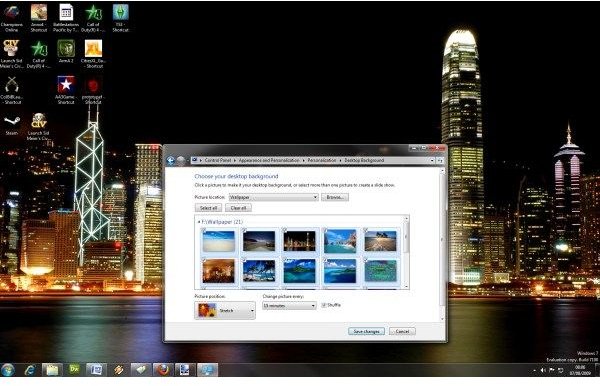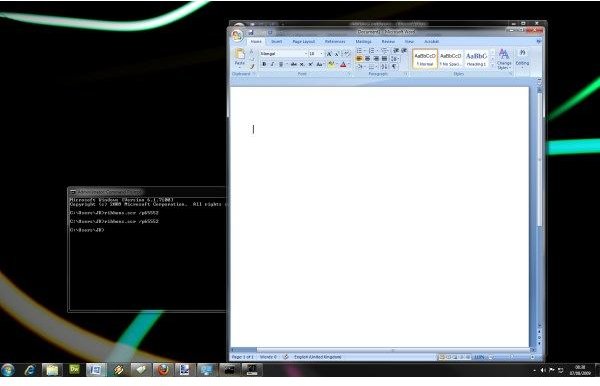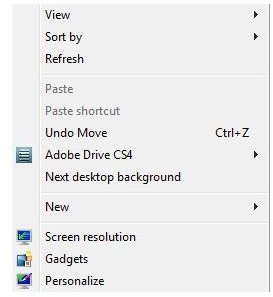Windows 7 Wallpapers - Custom Slideshows & Moving Wallpaper
Windows wouldn’t be Windows without desktop customization. As each successive edition arrives there are more and more options available to make your desktop your own. Fortunately the pattern continues with Windows 7 with an extensive set of options to change themes, menus, screensavers and wallpapers. It’s these wallpaper options that we are going to look at now.
Right clicking anywhere on the desktop will bring up a menu with some options.
Choose Personalize to access the desktop customization menu, then Desktop Background on the bottom left. This will take you to the desktop wallpaper dialog window, where you can play to your heart’s content.
The default setting is to take the wallpaper from the Windows Desktop Backgrounds folder. For once this contains something other than Microsoft branded wallpapers, in fact some of the default wallpapers are actually pretty good, others, pretty bizarre.

From the Desktop Background menu you can select one or many wallpapers to display. Selecting a single image will display it permanently; selecting multiple images will begin a slideshow.
To customize these settings, first choose a file location from the Picture Location drop down menu or use the Browse button. As you can see in the image, this folder is called Wallpaper. The displayable content of the folder will appear in the main window, and it is from here that you choose which ones to display. The tick you can see in the top left corner of each image means that it is selected to be displayed. Remove the tick from any image you don’t want to see.
The options at the bottom of the dialog window are similar to those found in Windows XP and Vista. The picture position option decides how the picture is fitted onto the screen. Fill is the full screen option, Fit is a widescreen option, like Letterbox on your TV, Stretch will resize the image to fit the screen, Tile will place the image multiple times over the desktop and Center will place the image in the center of the desktop framed in black.
The Change Picture Every: option is for the slideshow. If you have selected multiple images to be displayed, it automatically enables this. You can select from the drop down menu practically any timescale from ten seconds to one day. The last option is to shuffle, or randomize the images when being displayed.
For those of you who like something a little different, there is a hack which allows you to display moving screensaver images as your desktop background. The downside is that your desktop icons disappear, but the start menu and applications all work fine.
If you want to try this, first select a screensaver you want to use from the Screen Saver Menu in the Personalization dialog box and get the name of the one you want to use.

In this example I used the Ribbon screensaver, and although the image doesn’t show it, the background is moving exactly as the screensaver does.
To get it to work, open a CMD window by typing CMD in the run box. Then type:
ribbon.scr /p65552
Now you should see the background just like the one in this image. You can use any screensaver you like, just replace ribbon with the appropriate name. To cancel this background stop the ribbon process in Task Manager and you original wallpaper is restored. This tweak is more useful if you have some third party screensaver to choose from, but you get the idea.
References
- Screenshots by original author
- Author’s own experience
